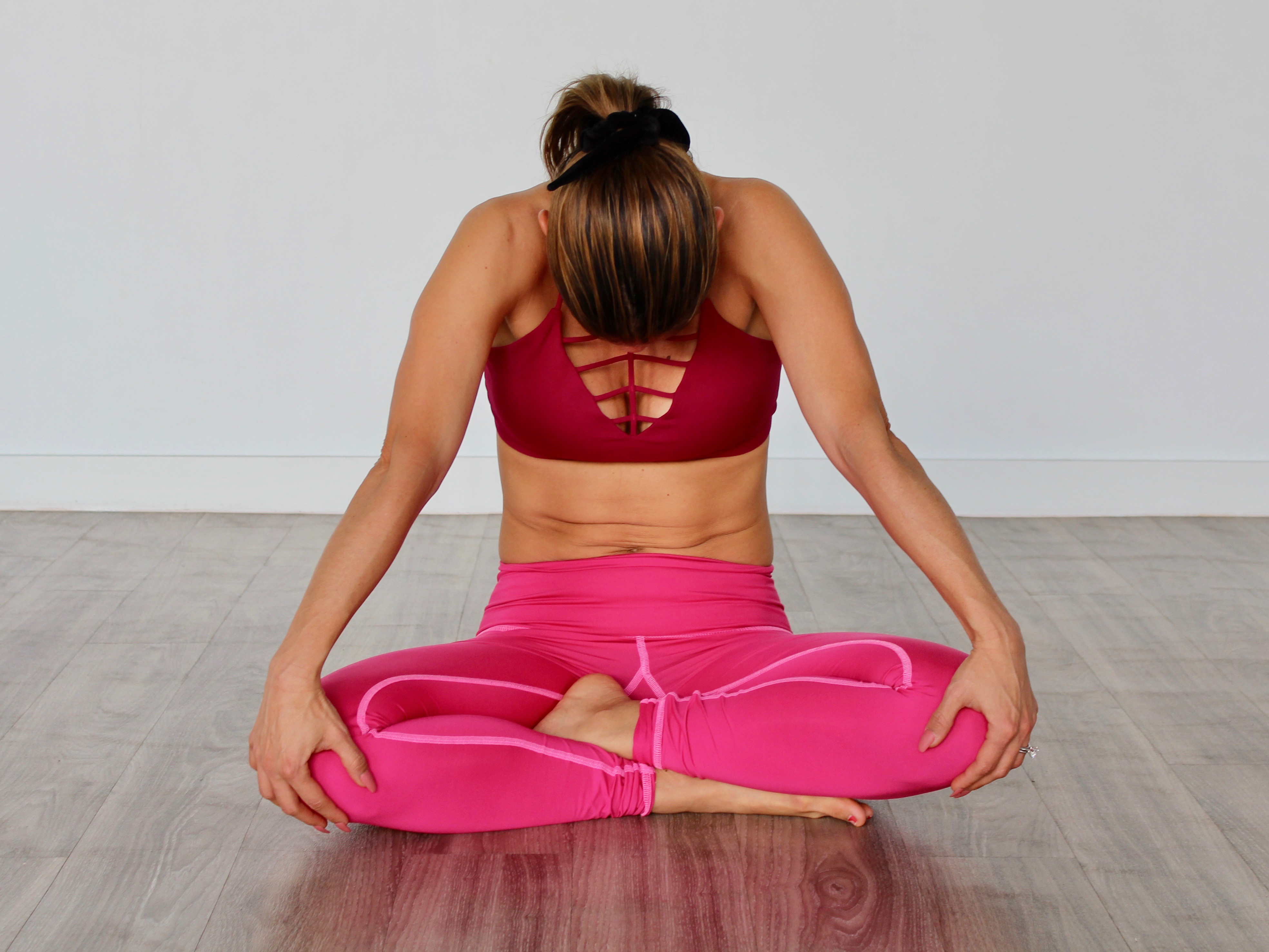
How to Target Your Abdominal Muscles with a Vinyasa Yoga Sequence
Having a strong core goes far beyond the six pack abs that everyone hopes to achieve. The abdominal muscles are a complex layered system that works together to maintain balance, stability and support. A strong core can mean injury prevention, better digestion, and improved breathing. Everything you do; walk, sit, reach, lift, bend, and stand involves your abs and back. Learn more about why you should work on this vinyasa yoga sequence to improve your core strength.
Your Core Muscles
The four main abdominal muscle groups are the transversus abdominis, the deepest layer of the abs. They stabilize the trunk and maintain internal abdominal pressure. The rectus abdominis runs along the ribs and down to the pubic bone at the front of the pelvis. This is your “six pack” and it moves the body between the ribcage and pelvis. The next set of muscles is called the external obliques and they frame the rectus abdominis along the side body. Their main function is to twist the trunk. Finally we have the internal obliques located inside the hip bones; they also help the trunk with twisting motions. Your core is a long column that connects the upper body with the lower body and having a solid foundation creates more ease and control in all physical activities. Get ready to work your core from every angle with the following vinyasa yoga sequence.
A Vinyasa Yoga Sequence for Your Core
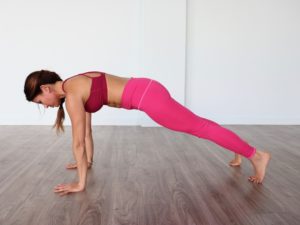 Plank Pose
Plank Pose
Plank is a standard yoga pose that packs a punch. It works your entire body at once and sets your abs on fire after just a few seconds. Doing this pose often will greatly improve the strength in both your rectus and transversus abdominis. Make sure your shoulders stack over the wrists and engage everything from your core to your legs. Imagine drawing in the belly up towards the spine as if you were creating a “dome” shape in the mid and upper back. Continue breathing deeply through the nose and hold for at least 8 long breaths.
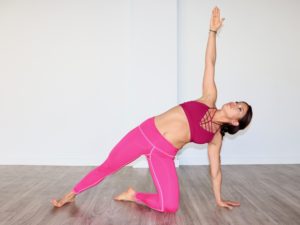 Side Plank
Side Plank
The sideways version of plank is a great pose to target the external and internal obliques. You can begin with modified side plank by having one knee on the ground and then work your way into hovering the knee or trying the full version with the legs straight. The key to holding this pose for longer periods of time is to recruit the leg and upper body muscles. Maintain the alignment in the wrist and shoulder and flex the feet so you can balance with more stability on the outer edge of the foot. As with all poses try to maintain the breath and focus on squeezing your belly muscles every time you exhale.
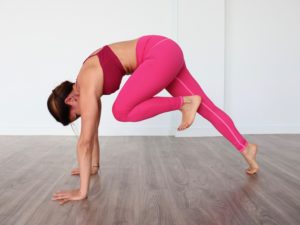 Tiger Pose
Tiger Pose
This pose works every single muscle in your abs, especially if you can learn how to engage your bandhas (energy locks). Draw the belly in towards the spine as you tuck the knee into the chest, lift the pelvic floor, and tuck the chin into the chest. Use the exhale to draw the knee in and then lift the leg back into down dog splits on the inhale. Do this five to eight times on each leg, each time focusing on engaging all three bandhas.
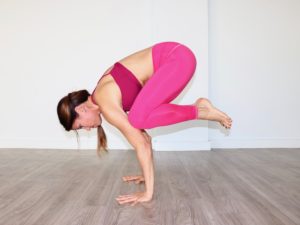 Crane Pose
Crane Pose
Crane pose is very similar to tiger pose in that you have to draw the knees into the chest to lift the feet off the ground. Remember the doming of the spine in plank? You do the same thing here. The chest extends forward, the belly sucks into the spine and the core pulls the feet off the ground. Try holding this pose for five to eight breaths while breathing deeply though the nose. Avoid holding your breath at all costs.
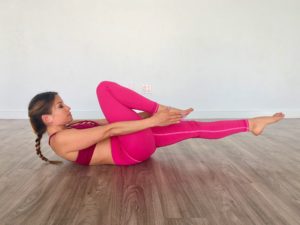 Bicycle Crunches
Bicycle Crunches
Doing this move engages the deepest level of your abs and you’re sure to feel soreness the next day. As with all crunches, quantity is key. We like to aim for at least twenty-five reps of this on each leg so you fully exhaust the deepest layer of the abs along with the obliques and that six pack we all dream of. Interlace the hands behind the head and tap opposite elbow to knee. Extend the leg and switch sides focusing on twisting the torso from side to side while squeezing the abdomen as you exhale through the nose.
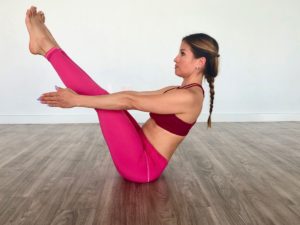 Boat Pose
Boat Pose
Navasana is an underrated, yet powerful pose that not only engages the core but also the psoas muscle. This muscle is one of the most vital muscles in the body; it connects into the lumbar spine, runs underneath the organs of the pelvis and inserts into the femur bone. The psoas connects the upper to the lower body, affects your posture and stabilizes the spine. A weak psoas can cause many of the surrounding muscles to compensate and become overused. This muscle is directly connected to the diaphragm through fascia. These connections affect your ability to walk and breathe as well as how you respond to fear and excitement. Doing boat pose and strengthening the psoas muscle as well as stretching it creates more balance to improve the fight or flight reactions to our environment. A few tips on navasana are to keep the spine straight, the shoulders relaxed and the heart lifting. Let your core do the work and continue breathing deeply through the nose. Try to hold this pose for at least five to eight breaths. You can also lower halfway with your legs straight and your shoulder and head off the ground for an even deeper challenge.
Doing all of these poses as a fluid vinyasa yoga sequence will greatly improve your abdominal strength and you’ll start to feel more stable and balanced in all the actives you enjoy doing. Click the links below to practice full length classes with a core strength focus.
Vinyasa Yoga Sequence | Videos for All Levels
Yoga for Core Strength | 20-minute Vinyasa with Carolina
Hips & Core | 40-minute Slow Flow with Amana
Ninja Training | 60-minute Vinyasa with Carolina
Low Back Love | 40-minute Slow Flow with Amanda
Want to try the ultimate yoga sculpt workout?

Leave a Reply
You must be logged in to post a comment.